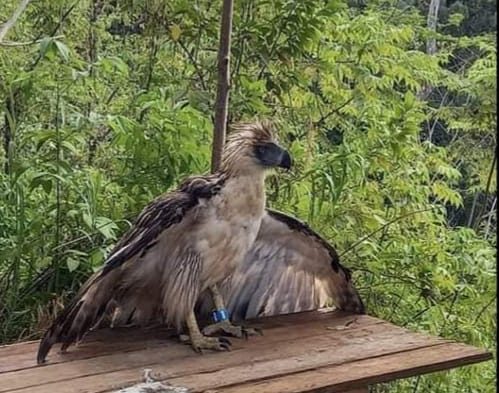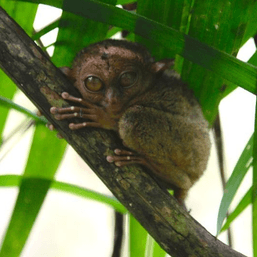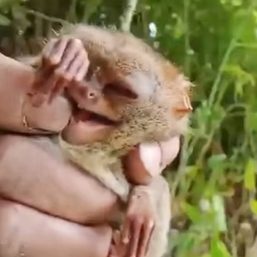SUMMARY
This is AI generated summarization, which may have errors. For context, always refer to the full article.

ZAMBOANGA CITY, Philippines – The remaining vast close canopy and patches of second-growth dipterocarp forests in the remote areas of Zamboanga del Norte and the Zamboanga Peninsula region make them a healthy nesting home for the endangered Philippine eagle (Pithecophaga jefferyi), environment officials said.
Early this month, local officials freed an over five-kilogram Philippine eagle named after Godod town where it was saved. It had suffered wing injuries in December.
Godod was one of the nine eagles rescued in the Zamboanga Peninsula since 1971. The fully matured eagle is just one of 400 of the species estimated by environment officials across the country.
The region has areas very ideal as a habitat for the eagles because these are relatively far from communities, said Ronald Gadot, assistant regional executive director of the Department of Environment and Natural Resources (DENR).
“The remaining intact or patches of dipterocarp forest in the Zamboanga Peninsula are among the few remaining identified habitats nationwide of our national bird and the pride of every Filipino, the Philippine eagle,” Gadot said.
He said the rescue of Godod only showed the richness of the biodiversity in Zamboanga del Norte and the Zamboanga Peninsula region.
Gadot said the mountainous area in Godod town where the Philippine eagle was found and subsequently released harbors wildlife such as monkeys, hornbills, snakes, flying lemurs, wild pigs, wild cats, and a host of others that form part of its diet.
The DENR in Region IX has been collaborating with the Davao City-based Philippine Eagle Foundation (PEF) in efforts to protect the eagle.
The PEF began exploratory work in the Zamboanga Peninsula in 1998. In 2007, it began monitoring of at least three eagle nesting sites in Linay, Baliguian in Zamboanga del Norte, Midsalip in Zamboanga del Sur, and at the Pasonanca Natural Park in Zamboanga City.
PEF director for research and conservation Dr. Jayson Ibañez said that aside from Godod, PEF also helped in saving a Philippine eagle named Kalinawan in 1995. It was given care by the DENR in Luzon and then turned over to the Philippine Eagle Center in 2009.
There, it hatched its first fledgling in 2013 through cooperative artificial insemination techniques with the eagle Pag-asa as the semen donor.
The DENR and PEF followed four nesting attempts of the eagle pair in Linay town between 2007 and 2014, leading to the birth of four young eagles that survived and eventually flew off their nests in Zamboanga del Norte.
Officials could not give estimates of the Philippine eagle population in the Zamboanga Peninsula but Gadot said, “We are sure that the remaining dipterocarp forest of this region is still inhabited by this magnificent bird.” – Rappler.com
Frencie Carreon is a Mindanao-based journalist and is an awardee of the Aries Rufo Journalism Fellowship
Add a comment
How does this make you feel?





There are no comments yet. Add your comment to start the conversation.